Posté par Sarah Feron, le 13 mars 2015;
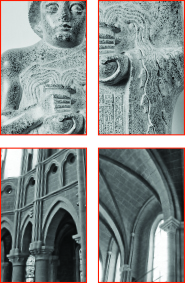
L’histoire, l’histoire de l’art et l’archéologie s’imbriquent à travers les figures exceptionnelles de Jacques Le Goff et Tonio Hölscher alors que la fécondité des catégories territoriales révèlent ici Babylone, la Méditerranée ou encore le Saint-Empire romain germanique. L’actualité de la recherche s’écrit aussi dans une confrontation de la discipline à l’histoire des corps et des dieux, comme elle redéfinit ses objets et ses moyens en se fondant sur le canon de la Grèce antique, ou en prenant de front la question de la situation des savoirs et de la migration du savant : Erwin Panofsky par Johanne Lamoureux.
Ce numéro est consultable sur . . . → En lire plus
Posté par apahau, le 12 mars 2015;
- Date limite : 10 avril 2015
- Date et lieu du colloque : 8-9 juin 2015, Royaume Uni, Université de Bristol
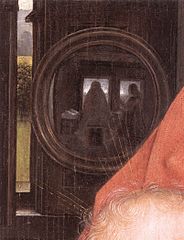 Where does the recent sensory turn in the Arts and Humanities leave the study of Visual Culture? Can the viewer/object model incorporate the full sensorium without imposing ocularcentrism? How has vision’s relation to the other senses been expressed and explored through the visual arts from Antiquity to the Early Modern Period? How have the senses and sensory experience been represented in art before the Modern era? Where does the recent sensory turn in the Arts and Humanities leave the study of Visual Culture? Can the viewer/object model incorporate the full sensorium without imposing ocularcentrism? How has vision’s relation to the other senses been expressed and explored through the visual arts from Antiquity to the Early Modern Period? How have the senses and sensory experience been represented in art before the Modern era?
This conference will explore the complex relationship between the visual and the sensory in contemporary theory and ancient practice. It will investigate the ways that art, from icons to illuminated manuscripts, music to architecture, and poetry to theatre, acted . . . → En lire plus
Posté par Sarah Feron, le 12 mars 2015;
- Date et lieu du séminaire : 15/04/2015, Paris, INHA
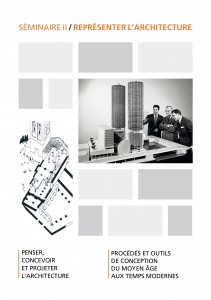 Deuxième séance du séminaire II / Représenter l’architecture Deuxième séance du séminaire II / Représenter l’architecture
Gaël Huitorel, université Paris-Est Procédures et méthodes de conception d’un entrepreneur bâtisseur de l’industrie agricole au XIXe siècle. Elisabeth Essaian, Ensa de Paris-Belleville Moscou du plan de 1935 : explorations figuratives au service du nouveau projet.
Modération Jean-Philippe Garric, université Paris 1-Sorbonne
Poursuivant le questionnement autour de la représentation de l’architecture au Moyen Âge, ce second cycle de séminaires, lieu d’un dialogue entre différentes approches et disciplines, souhaite approfondir pour son édition 2015 la notion de « projetation » dans un cadre chronologique plus vaste. Ainsi il sera question pour cette nouvelle saison de nous intéresser au processus créatif . . . → En lire plus
Posté par Noelle Christine Rebichon, le 8 mars 2015;
- Date et lieu du colloque : 13-14 mars 2015, Florence, Université de Florence & Institut Français.
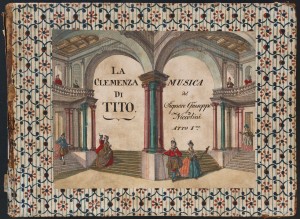 MÉDIALITÉ ICONIQUE. Usages et fonctions de l’image dans son rapport à l’espace, au son et à la lumière, du Moyen Âge au Baroque, en France et en Italie MÉDIALITÉ ICONIQUE. Usages et fonctions de l’image dans son rapport à l’espace, au son et à la lumière, du Moyen Âge au Baroque, en France et en Italie
13-14 mars 2015 Université de Florence (SAGAS ) – Institut français Firenze
Cette rencontre fait suite au colloque organisé en mars 2014, à l’Institut français Firenze, intitulé « L’Image au-delà du cadre » (compte-rendu publié dans les carnets d’Efmr http://efmr.hypotheses.org/202).
Ce deuxième colloque propose d’étudier la médialité iconique, en analysant les formes et les supports de l’image ainsi que ses usages et ses fonctions. Par là même, cette thématique soulève la question de la performance de l’image, de son efficacité et de . . . → En lire plus
Posté par Sébastien Bontemps, le 4 mars 2015;
- Date limite : 7 mars 2015
- Date et lieu : 22-25 octobre 2015, New York City, USA
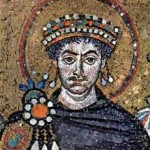 Call for International Center of Medieval Art (ICMA) Sponsored Session Proposals ICMA @ BYZANTINE STUDIES CONFERENCE, New York, 22-25 October, 2015 Proposals are invited for a session at the 41st annual Byzantine Studies Conference to be sponsored by the International Center of Medieval Art (ICMA) at the upcoming conference in New York this fall, 22-25 October 2015, taking place across multiple institutions. Thanks to the generosity of the Kress Foundation, the ICMA might be able to provide travel and hotel funds for the speakers at such a session up to a maximum of $600 for domestic travel, and up to $1200 for speakers coming from abroad. Every speaker must be an ICMA member at the time of application. To be . . . → En lire plus Call for International Center of Medieval Art (ICMA) Sponsored Session Proposals ICMA @ BYZANTINE STUDIES CONFERENCE, New York, 22-25 October, 2015 Proposals are invited for a session at the 41st annual Byzantine Studies Conference to be sponsored by the International Center of Medieval Art (ICMA) at the upcoming conference in New York this fall, 22-25 October 2015, taking place across multiple institutions. Thanks to the generosity of the Kress Foundation, the ICMA might be able to provide travel and hotel funds for the speakers at such a session up to a maximum of $600 for domestic travel, and up to $1200 for speakers coming from abroad. Every speaker must be an ICMA member at the time of application. To be . . . → En lire plus
Posté par Sébastien Bontemps, le 4 mars 2015;
- Date et lieu du colloque : 18-20 mars 2015, Université de Strasbourg
 L’évêché de Strasbourg a l’epoque ottonienne (Strasbourg, 18-20 Mar 15) Université de Strasbourg, March 18 – 20, 2015 L’évêché de Strasbourg à l’époque ottonienne : L’évêque Werner et la fondation de la cathédrale romane PROGRAMM/ PROGRAMME Mittwoch 18. März Université de Strasbourg, Palais Universitaire, Salle Pasteur 9h-12h Marc Carel Schurr, Université de Strasbourg : Einführung Benoît Tock, Université de Strasbourg : «L’année 1015» Philippe Nuss, Université de Strasbourg : «Aedificatoris elogio dignus – L’évêque Wernher bâtisseur de son temps» Georges Bischoff, Université de Strasbourg : «Werner et sa cathédrale entre histoire et légende. Cinq siècles d’historiographie (fin XIIIe-fin XVIIIe siècle)» Jean-Philippe Meyer, Service de l’Inventaire du Patrimoine de la Région Alsace: «La cathédrale de l’évêque Werner et ses premières transformations». . . . → En lire plus L’évêché de Strasbourg a l’epoque ottonienne (Strasbourg, 18-20 Mar 15) Université de Strasbourg, March 18 – 20, 2015 L’évêché de Strasbourg à l’époque ottonienne : L’évêque Werner et la fondation de la cathédrale romane PROGRAMM/ PROGRAMME Mittwoch 18. März Université de Strasbourg, Palais Universitaire, Salle Pasteur 9h-12h Marc Carel Schurr, Université de Strasbourg : Einführung Benoît Tock, Université de Strasbourg : «L’année 1015» Philippe Nuss, Université de Strasbourg : «Aedificatoris elogio dignus – L’évêque Wernher bâtisseur de son temps» Georges Bischoff, Université de Strasbourg : «Werner et sa cathédrale entre histoire et légende. Cinq siècles d’historiographie (fin XIIIe-fin XVIIIe siècle)» Jean-Philippe Meyer, Service de l’Inventaire du Patrimoine de la Région Alsace: «La cathédrale de l’évêque Werner et ses premières transformations». . . . → En lire plus
Posté par apahau, le 3 mars 2015;
 Depuis quelques années, un site rassemblant les informations sur les recrutements en histoire moderne et contemporaine a été mis en place par des historiens, avec le soutien de plusieurs associations professionnelles, au premier chef de l’AFHE (l’Association française d’histoire économique hébergeant le site), et de la section 22 du CNU. Depuis quelques années, un site rassemblant les informations sur les recrutements en histoire moderne et contemporaine a été mis en place par des historiens, avec le soutien de plusieurs associations professionnelles, au premier chef de l’AFHE (l’Association française d’histoire économique hébergeant le site), et de la section 22 du CNU.
En 2013, il a été étendu aux postes de maîtres de conférences et de professeurs de la section 21 (histoire antique, archéologie, histoire médiévale). La page comprend tous les postes de la session synchronisée et ouverts au fil de l’eau .
L’équipe de rédaction du site propose de recueillir les renseignements à propos de ces postes, . . . → En lire plus
Posté par Tristana Ferry, le 23 février 2015;
- Date limite : 1er mai 2015
- Date et lieu de la journée d'études : 23 octobre 2015, Suisse, Université de Lausanne
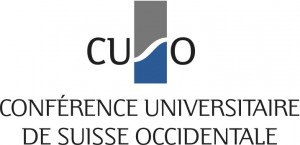 Cette journée d’études vise à réfléchir aux liens qui se tissent au cours de la période mentionnée entre la pratique de la peinture murale d’un côté et le travail de restauration et d’étude des peintures médiévales de l’autre. Cette journée d’études vise à réfléchir aux liens qui se tissent au cours de la période mentionnée entre la pratique de la peinture murale d’un côté et le travail de restauration et d’étude des peintures médiévales de l’autre.
L’engouement pour les décors médiévaux qui traverse les XIXe et XXe siècles et qui donne lieu en France, comme en Europe, à d’importants travaux de recensement, d’étude et de restauration, marque indéniablement les peintres décorateurs. Le voyage en Italie, voire en Orient, et la confrontation aux fresques et mosaïques exécutées par les maîtres primitifs et byzantins, constituent pour nombre d’entre eux un passage obligé. Ils y élaborent un matériel d’étude . . . → En lire plus
Posté par judith soria, le 14 février 2015;
- Date et lieu des rencontres : 2-3 octobre 2015, Paris, INHA
- Date limite : 26 février 2015
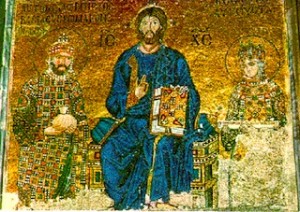 Pour la huitième année consécutive, les Rencontres internationales des doctorants en études byzantines se dérouleront à l’Institut national d’Histoire de l’Art (INHA) les 2 et 3 octobre 2015. Organisées sur deux jours, les Rencontres byzantines ont pour objectif de rassembler des doctorants de toutes nationalités consacrant leurs recherches à la civilisation byzantine, quels que soient leurs domaines de spécialisation (art, archéologie, histoire, lettres…). Afin de mettre en valeur la diversité des disciplines, aucune thématique n’est imposée. Chaque intervenant présente son sujet de recherche ou développe une problématique liée à son sujet pendant vingt minutes. Pour la huitième année consécutive, les Rencontres internationales des doctorants en études byzantines se dérouleront à l’Institut national d’Histoire de l’Art (INHA) les 2 et 3 octobre 2015. Organisées sur deux jours, les Rencontres byzantines ont pour objectif de rassembler des doctorants de toutes nationalités consacrant leurs recherches à la civilisation byzantine, quels que soient leurs domaines de spécialisation (art, archéologie, histoire, lettres…). Afin de mettre en valeur la diversité des disciplines, aucune thématique n’est imposée. Chaque intervenant présente son sujet de recherche ou développe une problématique liée à son sujet pendant vingt minutes.
Les échanges méthodologiques sont encouragés par les discussions entre les intervenants et les auditeurs . . . → En lire plus
Posté par Pascale Dubus, le 12 février 2015;
- Date limite : 1er juin 2015
- Date et lieu du colloque : 19-21 mai 2016, Rome
 Au Moyen Age comme à l’époque moderne, la papauté dispose d’imaginaires variés pour alimenter sa communication institutionnelle. On pense d’abord à l’Ecriture Sainte ou à l’hagiographie, à l’histoire, antique ou récente, à la mythologie, mais on aurait tort de négliger l’héraldique. Un nouveau pape apporte avec lui les images de son blason qui paraissent sur les monnaies, sur les sceaux, sur les médailles, sur la vaisselle et les ornements liturgiques, sur les reliures et les illustrations des livres, dans les armoriaux et dans la littérature de célébration ou de satire (pasquinades), sur les façades et les . . . → En lire plus Au Moyen Age comme à l’époque moderne, la papauté dispose d’imaginaires variés pour alimenter sa communication institutionnelle. On pense d’abord à l’Ecriture Sainte ou à l’hagiographie, à l’histoire, antique ou récente, à la mythologie, mais on aurait tort de négliger l’héraldique. Un nouveau pape apporte avec lui les images de son blason qui paraissent sur les monnaies, sur les sceaux, sur les médailles, sur la vaisselle et les ornements liturgiques, sur les reliures et les illustrations des livres, dans les armoriaux et dans la littérature de célébration ou de satire (pasquinades), sur les façades et les . . . → En lire plus
Posté par apahau, le 9 février 2015;
- Date et lieu de la conférence : 18 février 2015, Paris, INHA
 Le projet “Monastic Ireland: Landscape and Settlement” du Trinity College propose de clarifier le rôle des monastères dans la formation et la distribution de l’habitat rural et urbain irlandais entre les XIIe et XVIIIesiècles. L’un des phénomènes étudiés dans le cadre de ce projet est le rôle des ordres mendiants, dont les couvents deviennent au Moyen Âge un élément reconnaissable et caractéristique du paysage urbain européen. En Irlande, les frères mendiants découvrent un monde rural, très peu urbanisé, où les villes et bourgs qui les accueillent sont de taille parfois très modeste. Aujourd’hui, la survie de nombreux vestiges mendiants dans tout le pays . . . → En lire plus Le projet “Monastic Ireland: Landscape and Settlement” du Trinity College propose de clarifier le rôle des monastères dans la formation et la distribution de l’habitat rural et urbain irlandais entre les XIIe et XVIIIesiècles. L’un des phénomènes étudiés dans le cadre de ce projet est le rôle des ordres mendiants, dont les couvents deviennent au Moyen Âge un élément reconnaissable et caractéristique du paysage urbain européen. En Irlande, les frères mendiants découvrent un monde rural, très peu urbanisé, où les villes et bourgs qui les accueillent sont de taille parfois très modeste. Aujourd’hui, la survie de nombreux vestiges mendiants dans tout le pays . . . → En lire plus
Posté par Pascale Dubus, le 7 février 2015;
- Date et lieu du colloque : 29-30 mai 2015, Chartres, Centre international du Vitrail
 Depuis trois siècles, on essaie de comprendre les conditions qui circonscrivent les périodes gothiques, les termes qui les nomment, les formes, les techniques, les milieux, les usages qui les singularisent et les déterminent, tout comme les facteurs spirituels et sociaux qui les fondent. De ces recherches multiples et croisées, de ces regards projetés dans une grande diversité de chemins, il en résulte une architecture gothique mise en morceaux, dont l’historiographie nous livre « une histoire en miettes ». C’est pourquoi s’impose aujourd’hui la nécessité d’un état des lieux, auquel ce colloque se propose de participer, à travers une question, simple en apparence, mais . . . → En lire plus
Posté par Pascale Dubus, le 5 février 2015;
- Date limite : 1er mars 2015
- Date et lieu du colloque : 10-12 septembre 2015, Oxford, Lincoln College
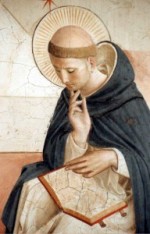 From the modest group of St Dominic and his sixteen followers, the Dominican Order grew rapidly in the first century of its existence, establishing itself across Europe as a learned Order of Preachers. This interdisciplinary conference will seek to explore the influences of the Dominican Order on all aspects of medieval life. The conference theme of ‘influence’ can be interpreted in its broadest sense, encompassing the large-scale influences of the Order and the legacy of its prominent figures, or can be examined on the personal level, such as the impact that the Order had on those that came into contact with it, both within and outside the Order. From the modest group of St Dominic and his sixteen followers, the Dominican Order grew rapidly in the first century of its existence, establishing itself across Europe as a learned Order of Preachers. This interdisciplinary conference will seek to explore the influences of the Dominican Order on all aspects of medieval life. The conference theme of ‘influence’ can be interpreted in its broadest sense, encompassing the large-scale influences of the Order and the legacy of its prominent figures, or can be examined on the personal level, such as the impact that the Order had on those that came into contact with it, both within and outside the Order.
Papers . . . → En lire plus
Posté par Thomas Bohl, le 1 février 2015;
- Date limite : vendredi 15 mai 2015
- Date et lieu des rencontres : 16, 17, 18 octobre 2015 ; Halle aux grains - place du général de Gaulle
Issoire, France (63500)
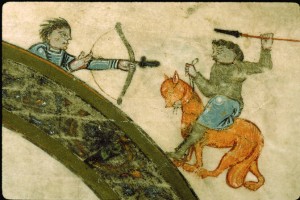 Argumentaire
Les XIe et XIIe siècles témoignent en Occident d’un recours croissant à l’écrit sous toutes ses formes : on assiste d’abord à l’essor de l’écriture diplomatique (c’est la « révolution de l’écrit », étudiée par Michael Clanchy, 1979), à la multiplication des œuvres théologiques, des chroniques, des œuvres littéraires, etc… et à l’augmentation du nombre des copies manuscrites.
Dans les dernières décennies, plusieurs études se sont penchées sur la question majeure de la culture écrite médiévale, selon des perspectives différentes. Au cours des années 1980, dans ses ouvrages sur les rapports entre oralité et écriture, l’anthropologue Jack Goody a étudié les . . . → En lire plus
Posté par Sébastien Bontemps, le 26 janvier 2015;
- Date limite : 10 février 2015
- Date et lieu : 18 avril 2015, Brookline, Hellenic College Holy Cross, USA
 Byzantine Studies (Brookline, MA, 18 Apr 2015) Brookline, MA, April 18, 2015 Byzantine Studies (Brookline, MA, 18 Apr 2015) Brookline, MA, April 18, 2015
Deadline: Feb 10, 2015
The Mary Jaharis Center for Byzantine Art and Culture and the Michael G. and Anastasia Cantonis Chair of Byzantine Studies at Hellenic College invite proposals for the 2015 Graduate Student Conference on Byzantine Studies, which will be held at Hellenic College Holy Cross in Brookline, MA on April 18, 2015. Brookline is located just outside Boston and is easily reached from any metropolitan location. We welcome graduate student proposals for papers in all subjects, disciplines, and methodologies related to Byzantine studies broadly conceived. We invite proposals in two categories: 20-minute conference papers and dissertation reports of 5–7 pages. Conference participants will have a chance . . . → En lire plus
Posté par apahau, le 23 janvier 2015;
- Date limite : 1er février 2015
- Date et lieu du colloque : 13-14 mars 2015, Florence, Institut Français & Université de Florence
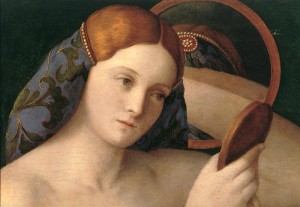 Ce deuxième colloque fait suite à la rencontre organisée en mars 2014, à l’Institut français Firenze, intitulée « L’Image au-delà du cadre ». Accueillie avec enthousiasme par la communauté universitaire de Florence, elle a reçu un public nombreux et varié. Le thème était alors le rapport entre le texte et l’image dans les arts, en France et en Italie, du Xe au XVIIe siècle. Tout en se plaçant dans la continuité — à travers l’actualité de la recherche en Histoire de l’art — le colloque 2015 aura pour objectif de proposer à nouveau un axe d’étude . . . → En lire plus Ce deuxième colloque fait suite à la rencontre organisée en mars 2014, à l’Institut français Firenze, intitulée « L’Image au-delà du cadre ». Accueillie avec enthousiasme par la communauté universitaire de Florence, elle a reçu un public nombreux et varié. Le thème était alors le rapport entre le texte et l’image dans les arts, en France et en Italie, du Xe au XVIIe siècle. Tout en se plaçant dans la continuité — à travers l’actualité de la recherche en Histoire de l’art — le colloque 2015 aura pour objectif de proposer à nouveau un axe d’étude . . . → En lire plus
Posté par apahau, le 18 janvier 2015;
- Date limite : 28 février 2015
- Date de parution : Juin 2015
 Le Bucema 19.1 publié en ligne sur la plateforme Revues.org est en préparation. Nous vous invitons à soumettre votre contribution pour ses différentes rubriques en vue de la publication du numéro varia n° 19.1, à paraître en juin 2015. Pour exemple, le numéro 18.2 est consultable ici. Le Bucema 19.1 publié en ligne sur la plateforme Revues.org est en préparation. Nous vous invitons à soumettre votre contribution pour ses différentes rubriques en vue de la publication du numéro varia n° 19.1, à paraître en juin 2015. Pour exemple, le numéro 18.2 est consultable ici.
Fidèle à son principe de diffusion de la recherche en train de se faire et librement accessible, le Bucema continue à mettre l’accent sur l’interdisciplinarité — sciences humaines et sociales, sciences de la nature et mathématiques —, comme le meilleur moyen d’inventer une nouvelle médiévistique. . . . → En lire plus
Posté par Sébastien Bontemps, le 12 janvier 2015;
- Date limite : 15 février 2015
- Date et lieu : 4-8 juin 2015, Leifers, 4-8 juin 2015, Leifers
 INTERNATIONAL POSTGRADUATE WORKSHOP ON MEDIEVAL RELIGIOUS ARCHITECTURE INTERNATIONAL POSTGRADUATE WORKSHOP ON MEDIEVAL RELIGIOUS ARCHITECTURE
The workshop addresses postgraduate students, who are preparing a thesis on any topic related to medieval church architecture between the 9th and 14th century. It aims to be a platform for the discussion of individual research projects and current results. The circle of participants is intended to include art historians and building researchers as well as theologians, historians, archeologists and architects, in order to enable an interdisciplinary exchange. At present, new research on medieval church architecture is hardly imaginable without an interdisciplinary approach. In recent years, a multitude of new technological resources were made useful for building research and an increasing number of new methodologies, especially concerning questions of liturgy and spatial use, . . . → En lire plus
Posté par Anastasya Chevalier, le 10 janvier 2015;
- Date et lieu de la journée d'études : 23 janvier 2015, Paris, INHA
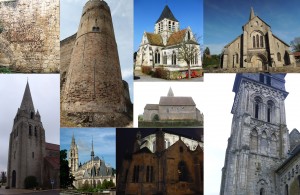 Étudier la formation des espaces d’un territoire, c’est étudier la répartition des activités humaines et leur progressive mise en administration par l’autorité, qu’elle soit locale ou royale, laïque ou ecclésiastique. Depuis quelques années en effet, on compte de nombreux travaux de thèses qui abordent ces questions sur le rôle des commanditaires, laïcs et ecclésiastiques, dans les grands chantiers de construction ou dans la commande d’objets de dévotion. Étudier la formation des espaces d’un territoire, c’est étudier la répartition des activités humaines et leur progressive mise en administration par l’autorité, qu’elle soit locale ou royale, laïque ou ecclésiastique. Depuis quelques années en effet, on compte de nombreux travaux de thèses qui abordent ces questions sur le rôle des commanditaires, laïcs et ecclésiastiques, dans les grands chantiers de construction ou dans la commande d’objets de dévotion.
Cette journée d’étude a pour objectif de mettre en présence ces jeunes chercheurs et de faire l’état des lieux des travaux actuels, afin d’envisager les horizons de la recherche dans ce domaine.
Regards sur la morphogenèse des réseaux d’églises : . . . → En lire plus
Posté par Sarah Feron, le 18 décembre 2014;
- Date et lieu de la conférence : 6 janvier 2015, Paris, INHA
 Conférence du Quadrilatère en partenariat avec la BnF Conférence du Quadrilatère en partenariat avec la BnF
6 janvier 2015 – 18h15-19h30 Auditorium de la Galerie Colbert entrée libre
Accès : 6 rue des Petits-Champs ou 2, rue Vivienne 75002 Paris
Marie-Hélène Tesnière, conservateur générale au département des Manuscrits, BnF Claudia Rabel, responsable de la section des Manuscrits enluminés à l’Institut de Recherche et d’Histoire des Textes (CNRS)
Figurant parmi les six livres d’heures parvenus jusqu’à nous de la prestigieuse collection du duc de Berry, qui en comptait dix-huit, les Petites Heures du duc de Berry constituent un témoignage capital de l’histoire de l’enluminure. Œuvre de plusieurs artistes de talent, qui, semble-t-il, se succédèrent . . . → En lire plus
|
Équipe Rédacteur en chef : Olivier Bonfait.
Rédacteurs : Elliot Adam (Moyen Age) ; Nicolas Ballet (XX-XXIe siècles) ; Matthieu Fantoni (musées) ; Antonella Fenech Kroke (bourses) ; Vladimir Nestorov (Lettre mensuelle)
Administrateur web : Matthieu Lett.
ancien éditeur : Pascale Dubus
anciens rédacteurs : Gautier Anceau, Sébastien Bontemps, Damien Bril ; Sébastien Chauffour ; Ludovic Jouvet ; Aude Prigot
|




















